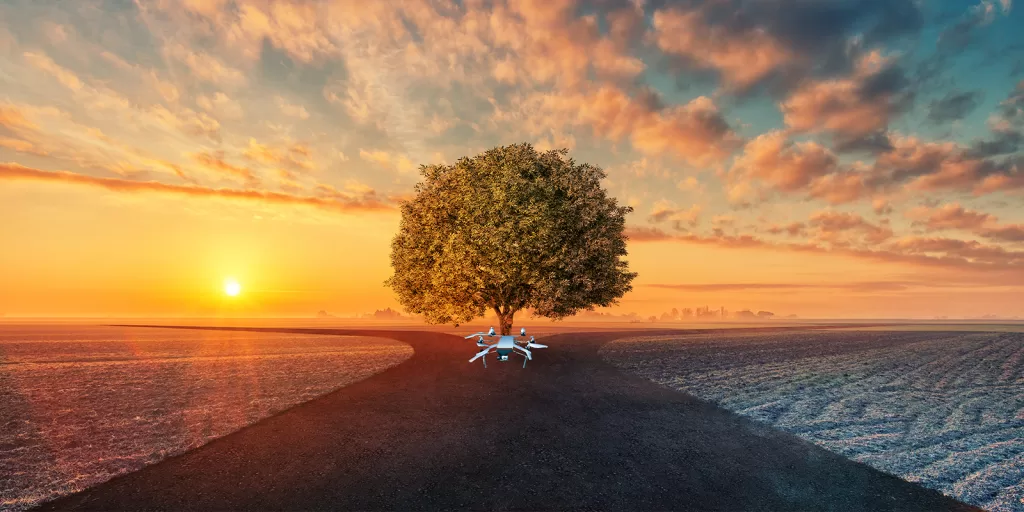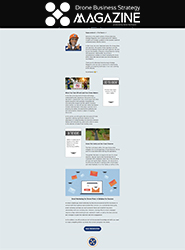
In recent years, the drone industry has undergone a remarkable surge in popularity, with hobbyists capturing breathtaking aerial footage and exploring the skies for pure recreational joy. However, as the drone market matures, a growing number of enthusiasts are contemplating a shift from casual flying to a more professional endeavor – the journey toward becoming a certified Part 107 commercial drone pilot. This transformation transcends a mere upgrade in equipment; it represents a leap into a regulated and potentially lucrative industry.
In this exploration, we’ll delve into the significant disparities between drone hobbyists and their commercial counterparts, providing a detailed checklist to guide enthusiasts through this substantial transition.
1. Regulatory Compliance
Hobbyist: Typically, hobbyists engage in drone activities for recreational purposes, navigating through fewer regulatory constraints that primarily revolve around basic safety guidelines and local regulations.
Commercial Pilot: Contrastingly, commercial drone pilots are bound by the necessity of obtaining Part 107 certification from the Federal Aviation Administration (FAA). This involves passing a rigorous examination encompassing airspace regulations, safety protocols, and operational guidelines.
2. Insurance and Liability
Hobbyist: Hobbyists generally experience limited personal liability, and insurance requirements may be less stringent, given the non-professional nature of their pursuits.
Commercial Pilot: On the professional front, commercial drone pilots often find themselves requiring liability insurance. Engaging in activities that may involve elevated risks, clients may also insist on proof of insurance before entering into agreements.
3. Skillset and Knowledge
Hobbyist: While hobbyists naturally develop flying skills over time, they might lack the comprehensive knowledge of airspace regulations, weather patterns, and emergency procedures that is expected of commercial pilots.
Commercial Pilot: The Part 107 training regimen ensures a deep understanding of aeronautical charts, weather factors, and emergency response protocols. Furthermore, commercial pilots must demonstrate proficiency in advanced flight maneuvers, setting them apart in terms of skill and knowledge.
4. Equipment and Maintenance
Hobbyist: Utilizing consumer-grade drones, hobbyists enjoy flexibility in equipment choices, often opting for models designed for recreational use.
Commercial Pilot: The professional realm demands higher-end equipment to meet specific client requirements. Regular maintenance becomes a pivotal practice for commercial drone pilots, ensuring safe and reliable operations during professional engagements.
Checklist for Transition
Before embarking on the transition from hobbyist to commercial pilot, carefully consider the following checklist:
- Part 107 Certification: Have you successfully obtained your FAA Part 107 certification?
- Insurance: Have you diligently researched and acquired appropriate liability insurance tailored for commercial drone operations?
- Equipment Upgrade: Is your current drone suitable for the demands of commercial use, or do you need to invest in more advanced equipment?
- Business Planning: Have you meticulously developed a business plan outlining your target market, services, and a competitive pricing structure?
- Network and Marketing: Have you proactively initiated the process of building a network within the industry, and do you possess a comprehensive marketing strategy to attract potential clients?
Conclusion: The Takeaway
Transitioning from a drone hobbyist to a certified Part 107 commercial drone pilot is a monumental step that transcends the realm of flying for fun. It involves not only the acquisition of knowledge, skills, and certifications but also a paradigm shift in mindset towards operating legally and professionally. As the drone industry progresses, the demand for skilled commercial pilots continues to rise. By conscientiously considering the provided checklist, enthusiasts can make informed decisions about transforming their passion into a viable and rewarding business.
The takeaway is clear – the transition from hobbyist to commercial drone pilot necessitates more than a love for flying; it requires a holistic approach encompassing regulatory adherence, investment in quality equipment, and the development of a business mindset. Those who successfully navigate this transition position themselves not only as skilled pilots but also as entrepreneurs ready to navigate the expanding opportunities within the commercial drone sector.
As the skies become a canvas for professionals, the potential for a fulfilling and lucrative career soars to new heights.
Be smart, safe, and forever fly!
If you have any questions, let us know! If you’d like to hire us, you can get more information here.
Written by: Tony Marino, MBA – FAA Certified Part 107 Commercial Drone Pilot and Chief Business Strategist at Aerial Northwest
Disclaimer: The information provided in this blog post is for general informational purposes only and should not be construed as legal advice.

DRONE BUSINESS STRATEGY MAGAZINE
A free digital publication made exclusively for all small business drone pilots to them help start-up, become profitable while sustaining a competitive advantage within the drone service industry sector they opt to serve.
“If you love to fly, we’d love to have you come aboard!”
We share your information with no one. Our Privacy Policy.









Leave a Reply
Your email is always safe with us.